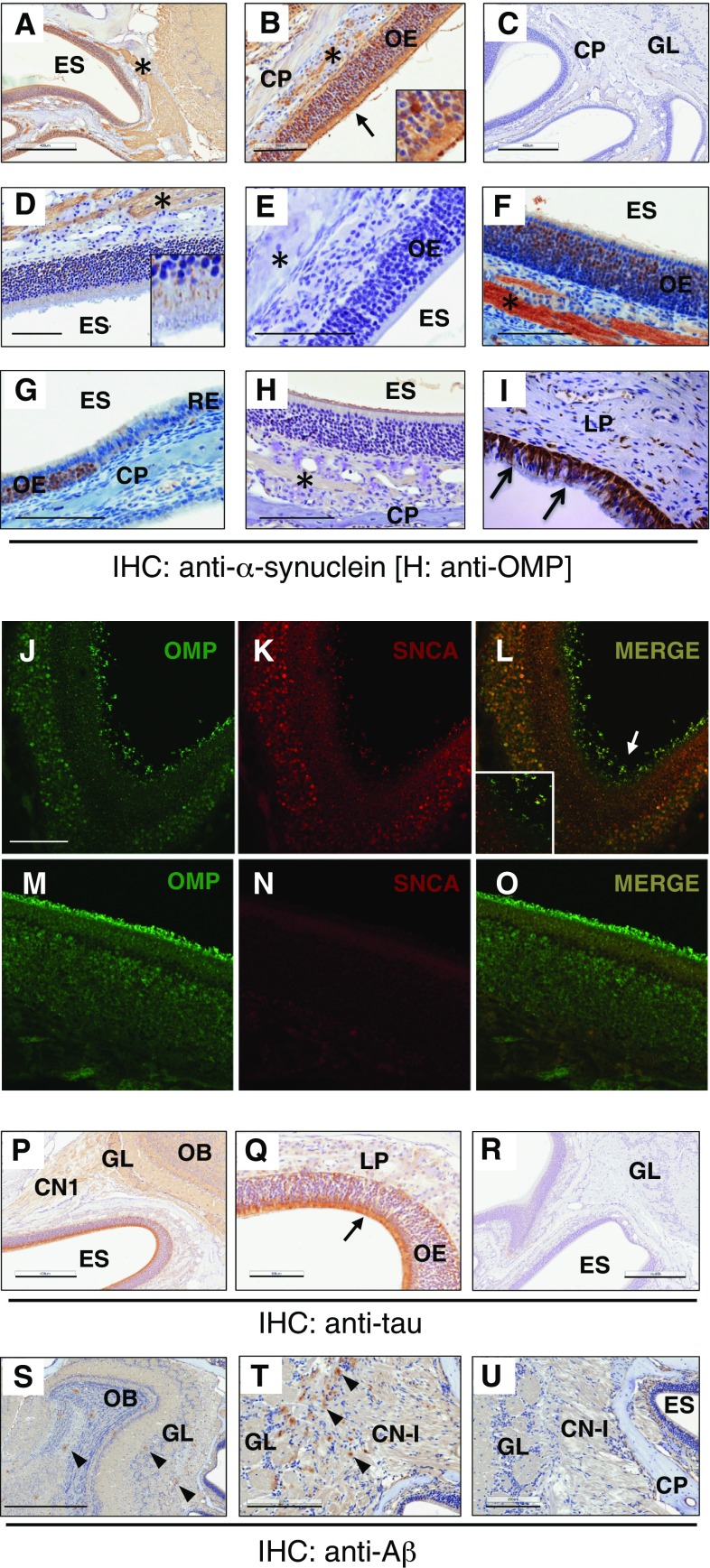Fig. 2.
α-Synuclein and tau are abundant constituents of the olfactory epithelium. a–g Immunohistochemistry (IHC)-based staining of α-synuclein in sections of whole skull preparations from adult mice reveals its specific expression in olfactory receptor neurons and CN-I (asterisk). Detection of human α-synuclein expression in adult dbl-PAC-tg(SNCA A53T)+/+; Snca −/− (a, b, d), absent in Snca-null (c, d) mice using antibodies (Ab) hSA4 (a–c) and LB509 (d, e). Insets in b and d are of olfactory epithelium (OE) at higher magnification and reveal α-synuclein expression in the dendrites of olfactory receptor neurons. f, g Endogenous, murine α-synuclein expression in the OE and CN-I, but not the respiratory epithelium (RE) of adult wt mice (Ab, Syn-1). h Typical staining of olfactory marker protein (OMP) in the OE of an adult wt mouse. i Expression pattern of α-synuclein in paraffin-embedded sections of human OE tissue collected at autopsy (Ab, LB509). Indirect immunofluorescence-based microscopy to co-label α-synuclein and OMP in olfactory receptor neurons in adult dbl-PAC- tg(SNCA A53T)+/+; Snca −/− (j–l) versus Snca-null (m–o) mice. Arrows in l and inset denote co-labelled dendritic knobs of olfactory neurons projecting into the ethmoid sinus. No double labelling is seen in o, as expected. IHC staining for specific, endogenous tau expression in the olfactory epithelium (OE) of adult wt (p, q) and Mapt-null (r) mice. IHC-based staining for amyloid-beta protein (Aβ) in sagittal sections of 6-month-old APP-transgenic (s–t) and wt (u) mice reveals Aβ-positive plaques in CN-I and throughout the olfactory bulb (arrowheads) in the former. ES ethmoid sinus; CP cribriform plate, GL glomeruli, asterisk denotes CN-I, LP lamina propria. Scale bars represent 1 mm (s); 400 μm (c, p, r); 200 μm (a); 100 μm (b, d–j, q, t, u)

